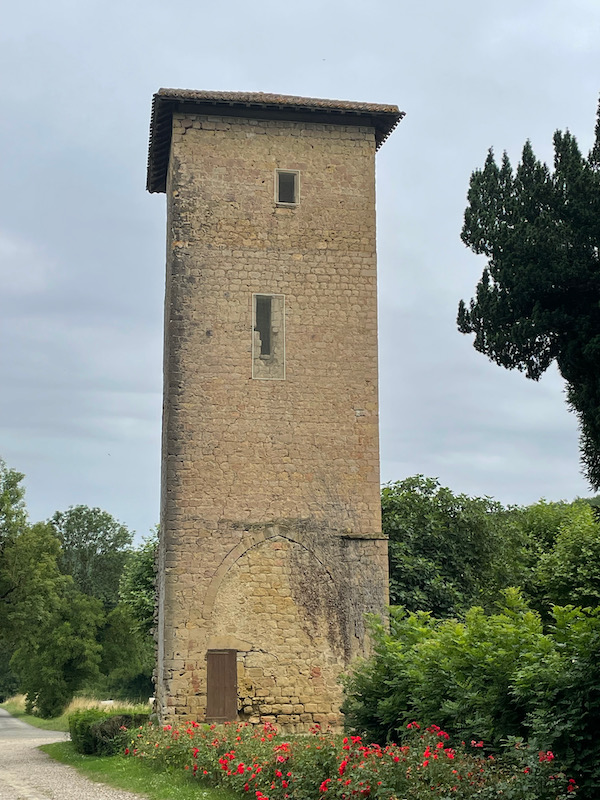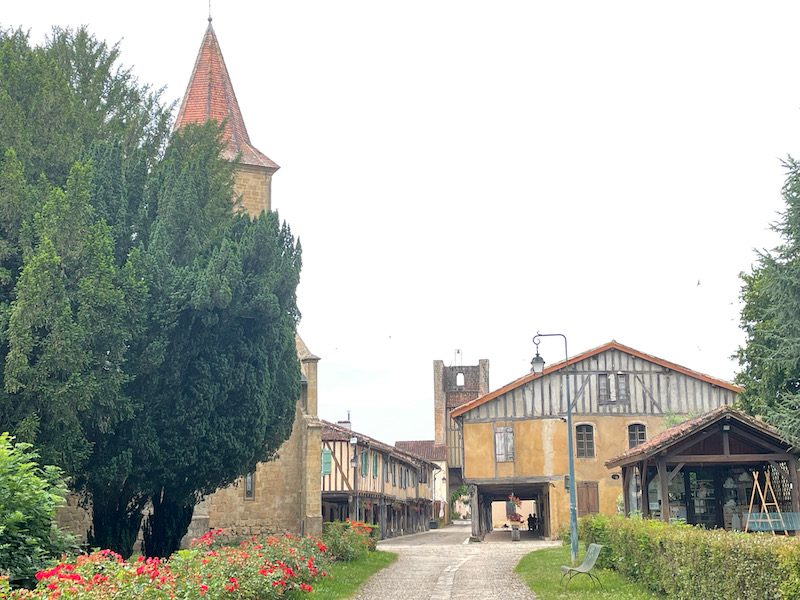Our Blog - Loop Trip - Tillac, France
Our first stop was almost 2 hours away, the tiny village of Tillac. I'm not sure where the 280 inhabitants live, since it looked like it was only 2 blocks by 2 blocks! The village was created in the 11th century and by the late 14th century, it was surrounded by fortification walls. At that time, the village was roughly square, with each corner oriented towards one of the 4 main compass directions, with towers on the east and west walls.
We entered the medieval part of the village through the Rabastens tower, or Clock Tower, which dates from the 2nd half of the 13th century. On the outside, it is made of sandstone and you can see the defensive slit above the pointed arch doorway. The inside looks totally different! It is not really a square tower, like it looks from the outside, but 3 walls with a half-timbered guardhouse at the top.
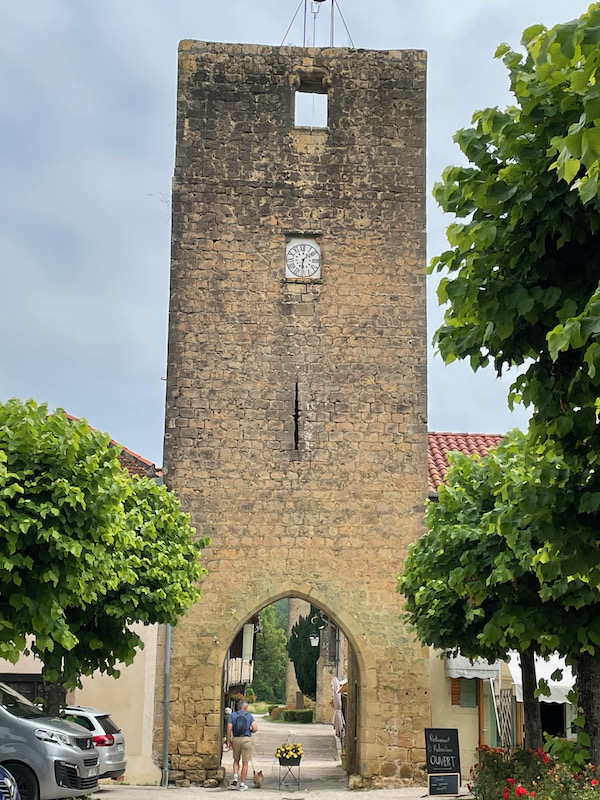
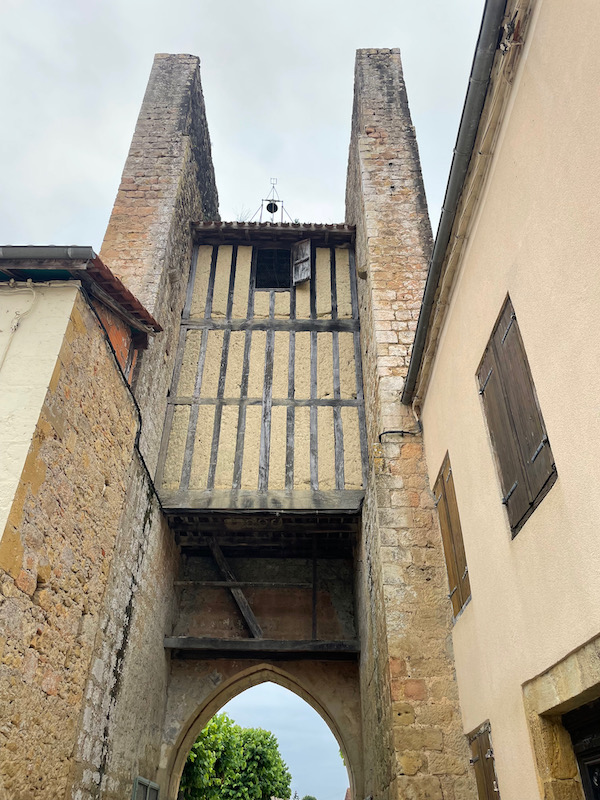
Then down the main medieval street, framed by two covered galleries. These all seem to be houses, with the entrance on the ground floor under the galleries. They are all half-timbered construction and date from the end of the 17th century.
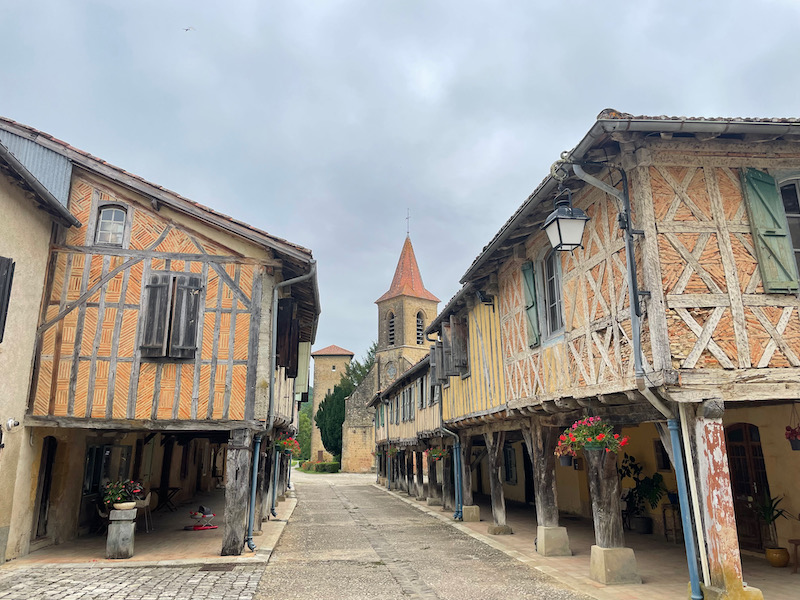
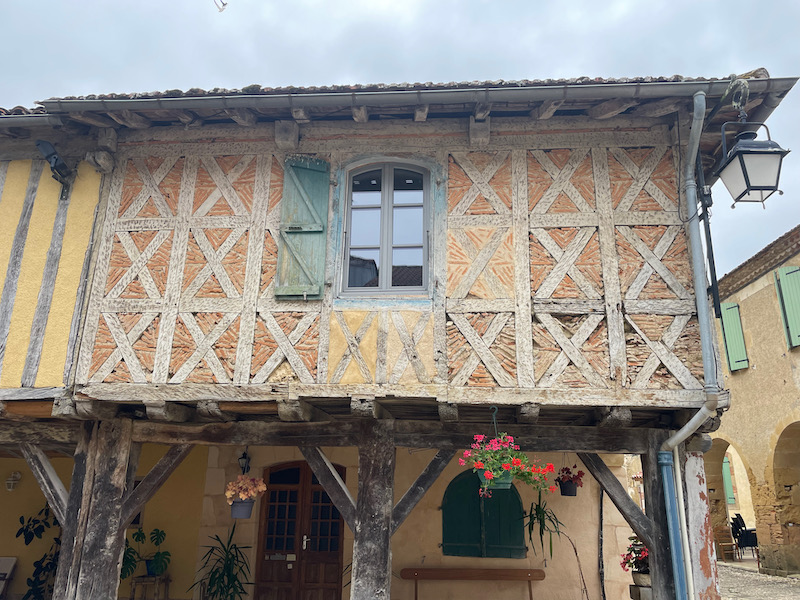
Just past these houses is the Gothic-style Saint-Jacques-le-Majeur church, It was built in the 15th century and then the nave was rebuilt in 1855 to add new openings to allow in more light.
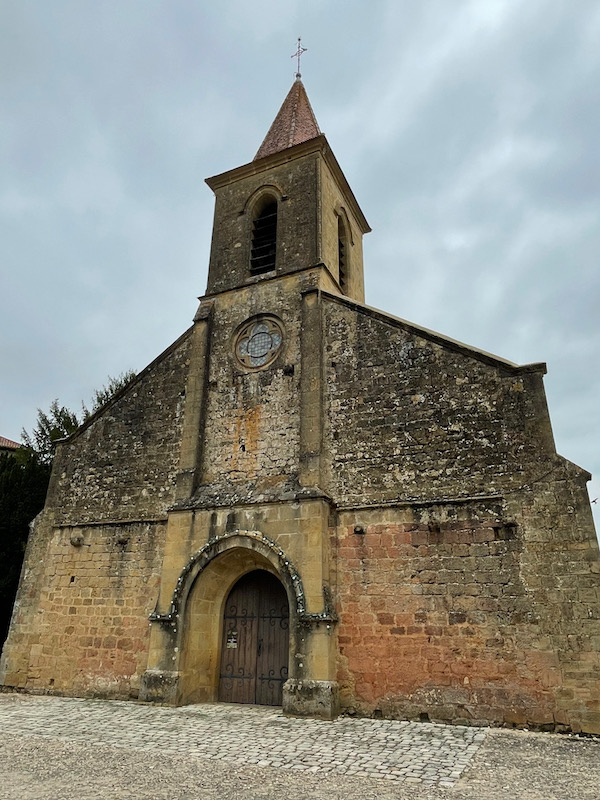
The interior was nice for a tiny village church, with an exposed wooden ceiling and white walls dotted with several statues. Just inside the door are a couple interesting wooden statues, including this carved wooden Saint James, inspired by a statue on the main portal of the Cathedral of Santiago de Compostela. You can tell it is Saint James by the scallop shell on his hat. On one wall, there is also a pietà on top of a monument to the memory of the dead of Tillac during the WWI and a statue of Saint Joan of Arc.
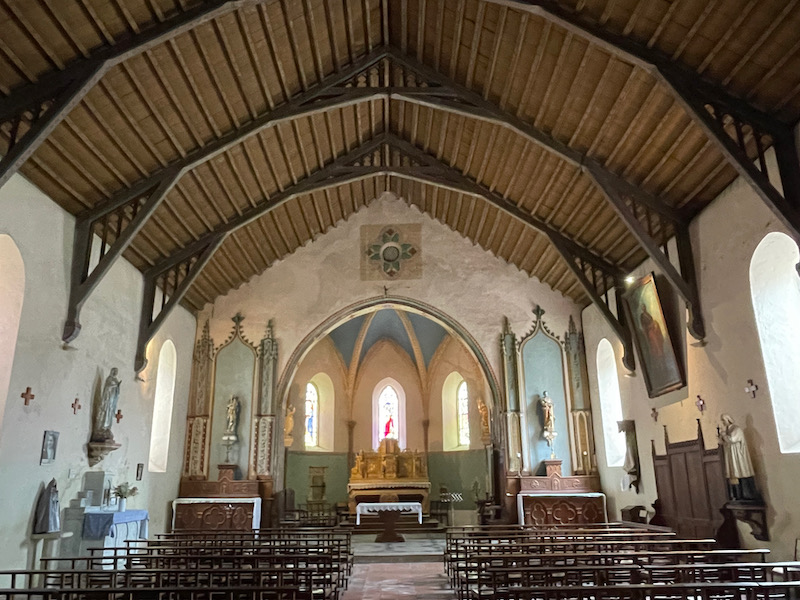
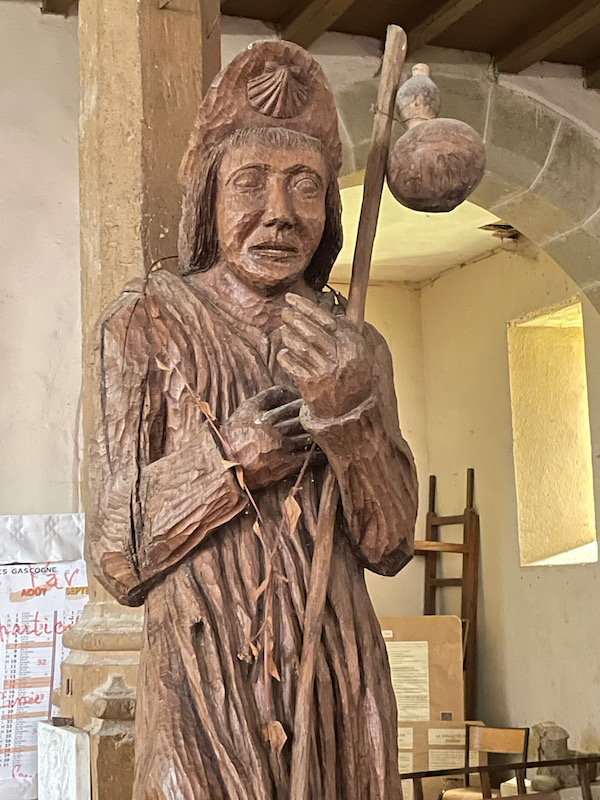
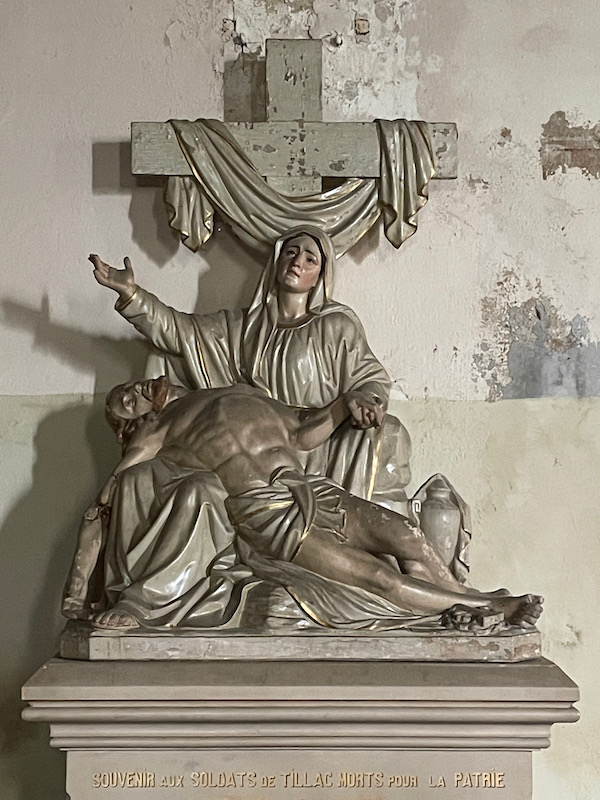
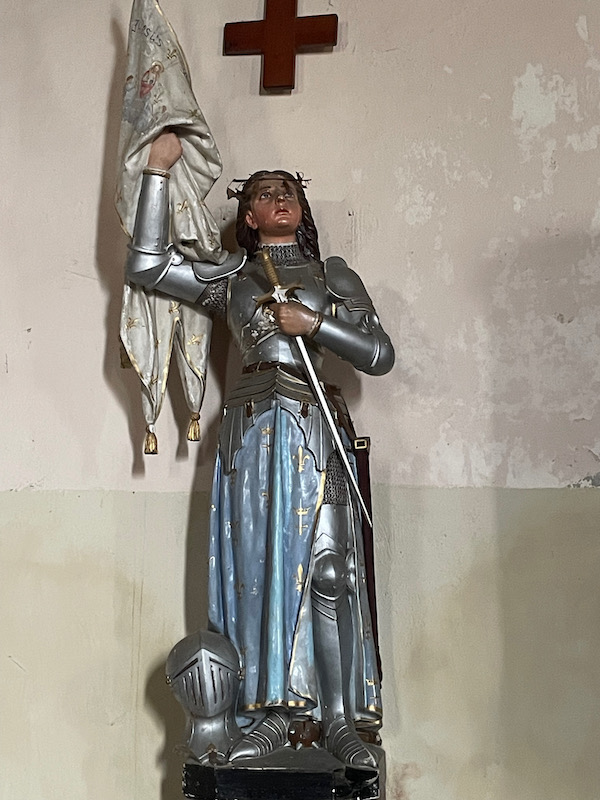
The altars on the left-and-right of the choir, the Chapel of the Virgin and the Chapel of Saint-Joseph, both have nicely-painted altarpieces.
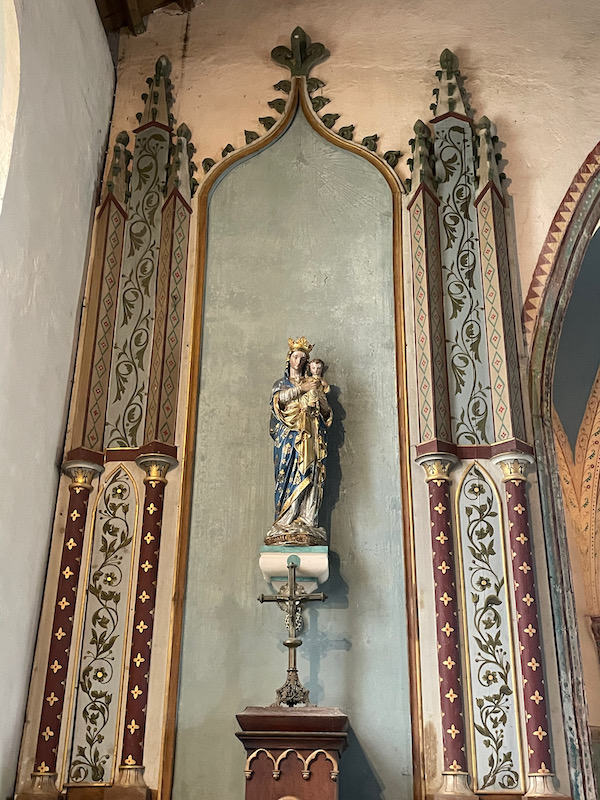
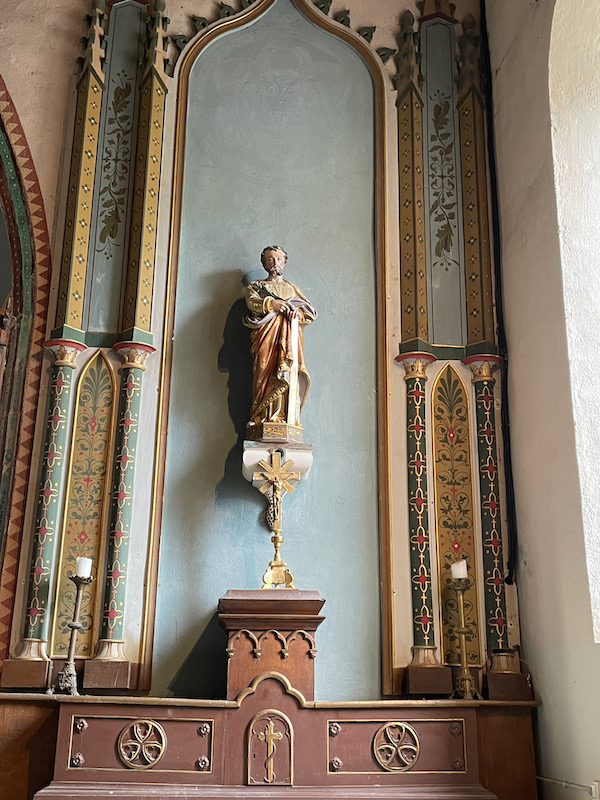
Some additional detail of the choir .. here you can see more detail of the ceiling, showing the painted beams, and then the painting just underneath. While the nave walls are white, the ceiling of the choir has painted Gothic vaults with a blue ceiling. You can also see the detail inside the opening.
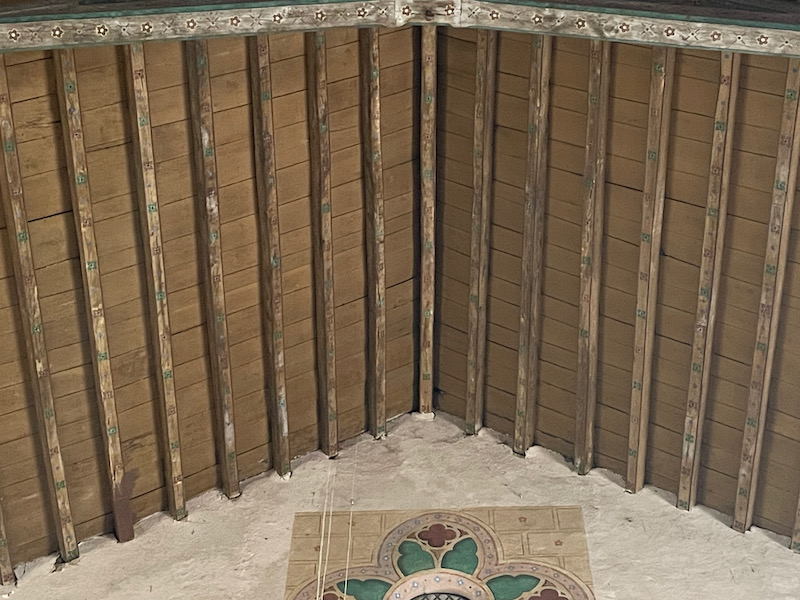
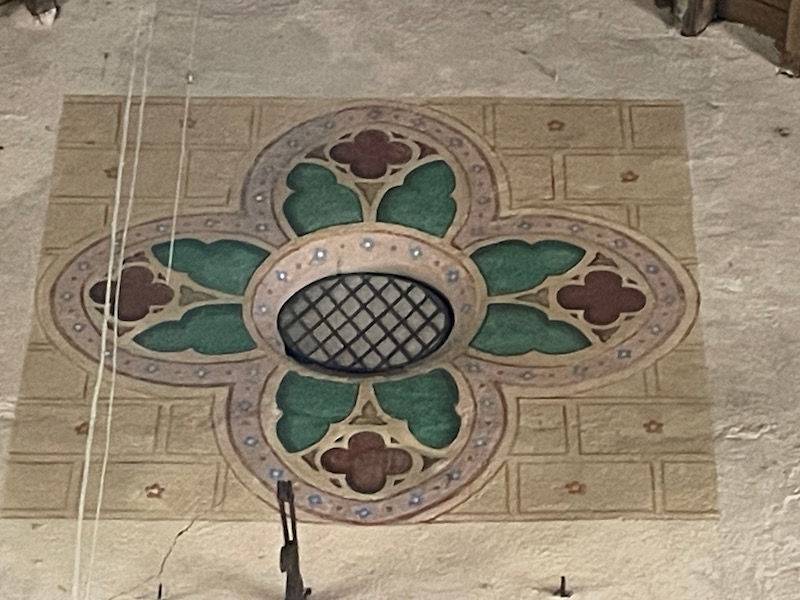
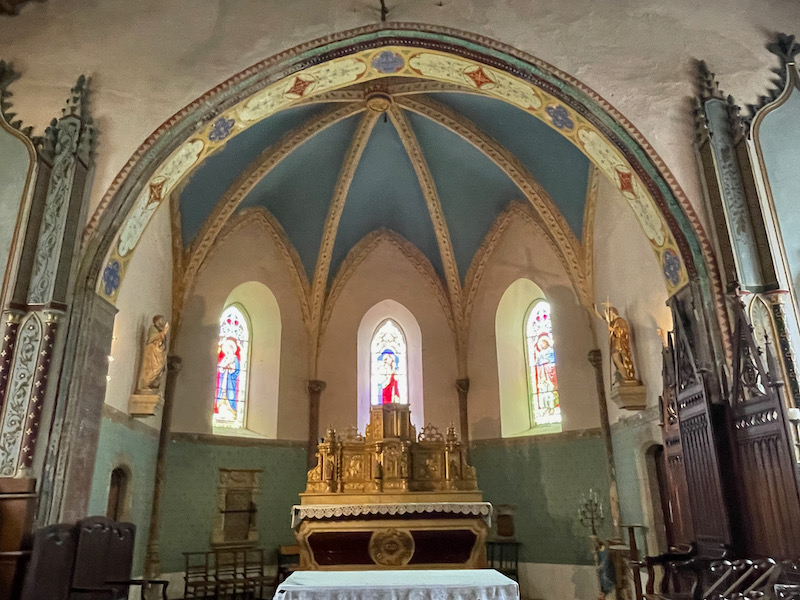
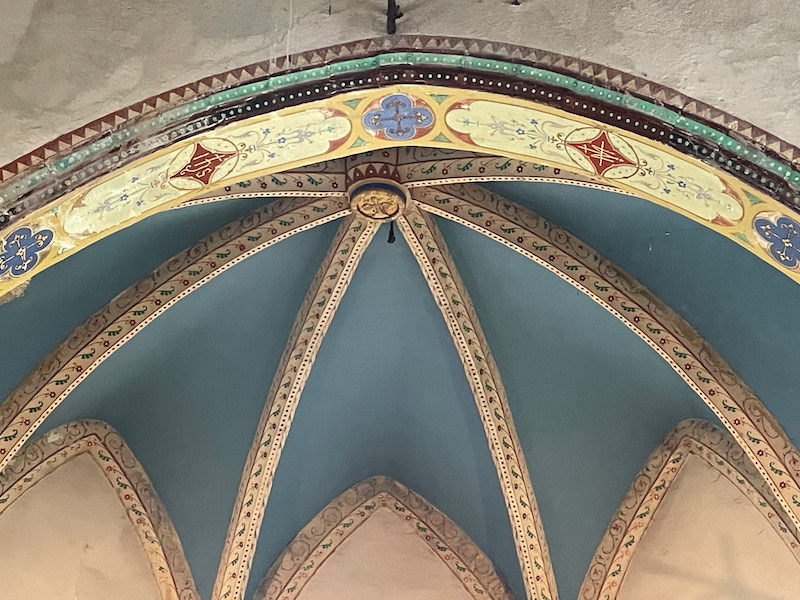
Just past the church is the Mirande tower, which marks the gate leaving the village on the other side. The last picture attempts to give you a view of "the whole town" ... standing at the Mirande gate, you can see the tower of the church on the left, then the gallery of half-timbered houses, and then the back-side of the Rabastens tower.
